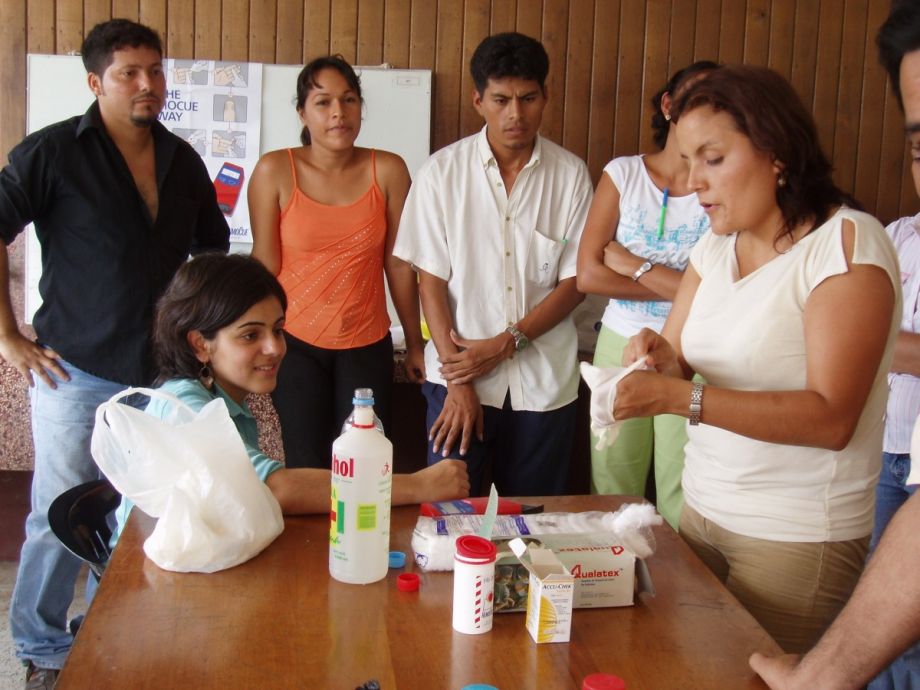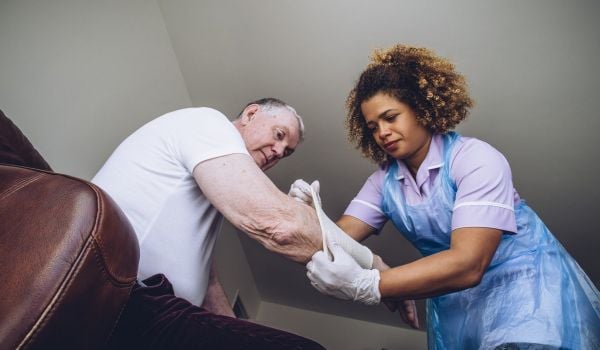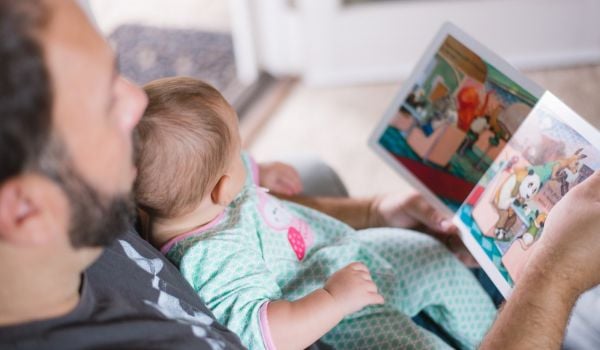Stanford physician and public health researcher Rita Hamad is researching how to improve health and reduce poverty worldwide. Based on her previous research on microfinance in Peru and South Africa, she’s already got some clues on how crucial urban planning can be to both. I spoke with her about, chronic disease, microloans, how poverty looks across the world, and more.
Could you talk about your background and how you ended up working in the field of poverty alleviation?
After I graduated from college, I worked … at the World Health Organization and … the American University of Beirut, and I was sort of working on projects that were sort of examining health or vulnerable populations, either in sub-Saharan Africa or the Middle East. And young though I was at that time, I sort of quickly noticed that the poorest were the ones that were the most unhealthy. And after a few years of exploring that, I sort of figured out what to do with my life … . Why is it that poverty and poor health are so intimately tied, and what can I do about it? And then at the same time I decided that I needed to be a physician as well so that I could interact with these vulnerable people in person, not just from the research standpoint, and to better understand their experiences and to do some hands-on work providing assistance as well.
So it sounds like you’ve worked in several different places around the world. And I know that your research focuses on both South America — you’ve had some recent work on Peru — and also America. And I was wondering if you could talk a bit about how America differs from other places abroad, and how this relationship [between poverty and health] might change from place to place.
I started off doing work in Peru. I had a project in South Africa. Currently, most of my work is domestic, but I’ve also got some projects that are starting up that are looking at refugees in different European settings. And you know in each country many of the specifics are a little different. The degree of absolute poverty might be different. You know, in some countries, poverty is two dollars per day, and in the U.S., we define poverty as a family of four at $24,000 [per year]. So societies and the governments themselves may look different. But if you specifically look at the biology of humans in all these places, we all respond similarly to stress, to inequality, to pollution. And so a lot of the lessons that we learn in different settings can be applied across those different types of places.
So you’re saying that there is not much difference between the effect that poverty has on a person in the U.S. versus the effect that poverty has in, say, Peru or South Africa. Am I getting that right?
There’s a lot of similarities, yes. You know, we all have the same biology, and we all have sort of an inflammatory response to chronic stress. We develop the same kinds of diseases — it makes us develop, you know, diabetes or high blood pressure in response to those sort of stressors. You know, some people are trying to alleviate extreme poverty by getting people above this arbitrary threshold that used to be a dollar a day, or a higher threshold. But we find that even in places like the U.S., or countries of Europe, which are high- or middle-income countries, that the poor in those countries, even though they’ve made it above this threshold, they still have higher rates of disease, higher mortality rates. So it’s not just absolute poverty, it’s the idea that there is inequality or less resources given in general to these vulnerable populations.
We tend to think of people in the developing world as being less vulnerable to chronic diseases. It sounds like you’re saying that’s not the case.
I think there’s a huge transition going on in lower- or middle-income countries that happened in the U.S. a long time ago, which is that when societies are very poor and missing things like sanitation or housing, the main drivers of disease are infectious disease or childhood disease. But once societies are past that resource hurdle, of, you know, sanitation, housing, that sort of thing — which a lot of countries are — then we see that we get into this situation where a lot of countries look a lot more similar. And really, middle-income countries, the burden of diseases like heart disease and diabetes really has been surging in the last decade or couple decades as people get past that transition.
I want to pivot a little bit and talk about your work on microfinance. Can you sort of walk me through what your research was and what it found?
Just to give your readers a little bit of background, the idea behind microcredit has been around for — I heard about it maybe 20 years ago at this point, maybe 15 years ago. And the idea is that in other countries there is a lot of poverty and the theory is the main obstacle for people being able to make small businesses and so the idea is to provide loans to these individuals so that they can invest it in their families and in their businesses, and they can improve quality of life more generally. So when I got started on my research about a decade ago, there really was not a lot of evidence on these programs. There was a lot of anecdotal evidence from the microcredit organizations themselves. So I set out to conduct a couple of different types of studies of these microcredit organizations. One of them was the project I did in Peru. And so in that one we sort of did a survey of women in a microcredit organization for families and we found that those women who had been clients for longer amounts of time had improved nutrition, improved anemia and food security as compared to those women in the programs for shorter amounts of time, and we found the same in their kids as well — improved anemia and improved nutrition — as well as in the most recent study we found improved depression among these women.
At the same time I was involved in another study in South Africa that was, in that study we randomized small loans to individuals and we had a control group, and what we found there was actually that people who received the microcredit loans actually had higher stress levels than the ones who didn’t. And so, I think that was our first hint that it’s a more complicated story and you know that a lot of studies have come out since then and there’s just been a lot more research and there’s, you know, very much mixed findings. There are studies that use the randomized controlled trials, which is the standard for scientific research, and they find maybe minor improvements in business growth or expenditures, but a lot of them show that there is no difference in people who got the loans versus those who didn’t. And the thought is that because these are loans, a lot of people sort of gloss over that, but these poorer families have to pay back the money. And then for whatever reason, their businesses are unsuccessful or they have some sort of family situation where they weren’t able to pay it back, then you know, the interest rates on these loans are extremely high. You can imagine that if you are giving people a loan, rather than a grant or some other form of aid, it might backfire in a big way. And a lot of these studies have found that among the poorest people, giving them a loan actually has a lot of these unintended types of harm.
So you’re basically saying that, there’s a possibility for, you know, through increasing stress and possibly impoverishing people and doing things like undermining their nutrition or their access to food, or what have you, these loans might actually be endangering health.
Yeah, so it very much depends on the country setting. And, you know, should we be giving them the loans or should we be giving them business training to teach them how to use the loans? Should we not be giving them loans at all? Should we just be giving them grants to invest in their businesses? And not expect these very poor people to be paying us back at higher-interest rates than we would even have in higher-income countries? So, you know, there’s mixed findings. In some settings it looks like it works. In other settings, there are studies that have shown adverse impact. And it might depend on, you know, what are gender relations in that country? Or, are there even employment opportunities in that community, where people could spend the money, or is it sort of like a dead-end situation? So there’s a lot of thought put into these programs when they are utilized, otherwise some well-meaning nonprofit could do more harm than good.
Is there a connection between people’s status as an urban dweller versus a rural dweller and how well microfinance can do? Is there any way to link it to life in the city that makes it work better?
In doing my research, it was very clear that a lot of times you have to think about the setting in which the loans or whatever intervention is being implemented. In one example, we along with the microcredit organization ran this education intervention. And the people who got the education intervention knew a lot more about health, because we taught them about it, but did they change their behavior? Not really. Did their children’s health improve? Not at all. We didn’t see any changes in sort of like anemia or height or weight. Our hypothesis there was that, maybe there’s something there about the urban planning, maybe the transportation system makes it so they can’t get to healthcare, or the environment or the pollution where they live make it so that they can’t act on the new knowledge that they have. A lot of times, when we’re trying to improve the lives of the poor, you can’t focus on a single aspect, because, if you leave everything else unchanged, then there’s probably so many more obstacles to good health that you’re not addressing that your small program might not make enough of an impact.
It sounds like the big innovation is tailoring things to the context in which you’re working and taking in a lot of different variables and maybe giving people who have the most knowledge of the area the largest voice.
Yeah, and I’d say the other major lesson is that cross-sectoral approaches are hugely important. So the interventions I started off doing were really focused on health, and on giving microcredit clients education. But then we sort of realized that there are all these other obstacles. So we need to be living with the people who are doing the urban planning, and with the people who are doing the other sort of community development aspects. And now when I’m studying a much wider array of interventions, looking at education policy, earned income tax credit, or different social policies — realizing that social policies, and different types of health policies alone just sort of focus on clinics, or improving the healthcare sector, that’s not going to get you very far if all the structural or societal problems are still there.
In the years I’ve been a doctor, I’ve worked both in safety net settings, and I’ve also worked in systems that serve much more well-off individuals. And, you know, from working on the ground, it becomes really obvious that people living in poverty even here in the U.S. suffer from higher rates of practically every medical condition, and the diseases are more severe, and a lot of people, including the doctors, think this is about healthier choices, like smoking and alcohol and these sorts of things. But the research these days shows that it’s a lot deeper than that. There’s multiple pathways, that there’s the simple ability to afford things, like food or healthcare or housing, and there’s these biological effects of living in poverty that can lead to the development of chronic diseases. And that even when it comes to health behaviors that people have, that it’s not always a choice. People who are sort of mentally taxed because of poverty just don’t have the bandwidth or the cognitive resources to make these decisions, and there’s sort of exploitive marketing by tobacco and alcohol companies of low-income populations. So just to say that my experiences as a physician have helped me to see these linkages, and that the research part really adds to that perspective.
This interview has been edited for length and clarity.
The “Health Horizons: Innovation and the Informal Economy” column is made possible with the support of the Rockefeller Foundation.

M. Sophia Newman is a freelance writer and an editor with a substantial background in global health and health research. She wrote Next City's Health Horizons column from 2015 to 2016 and has reported from Bangladesh, India, Nepal, Kenya, Ghana, South Africa, and the United States on a wide range of topics. See more at msophianewman.com.
Follow M. Sophia .(JavaScript must be enabled to view this email address)

















